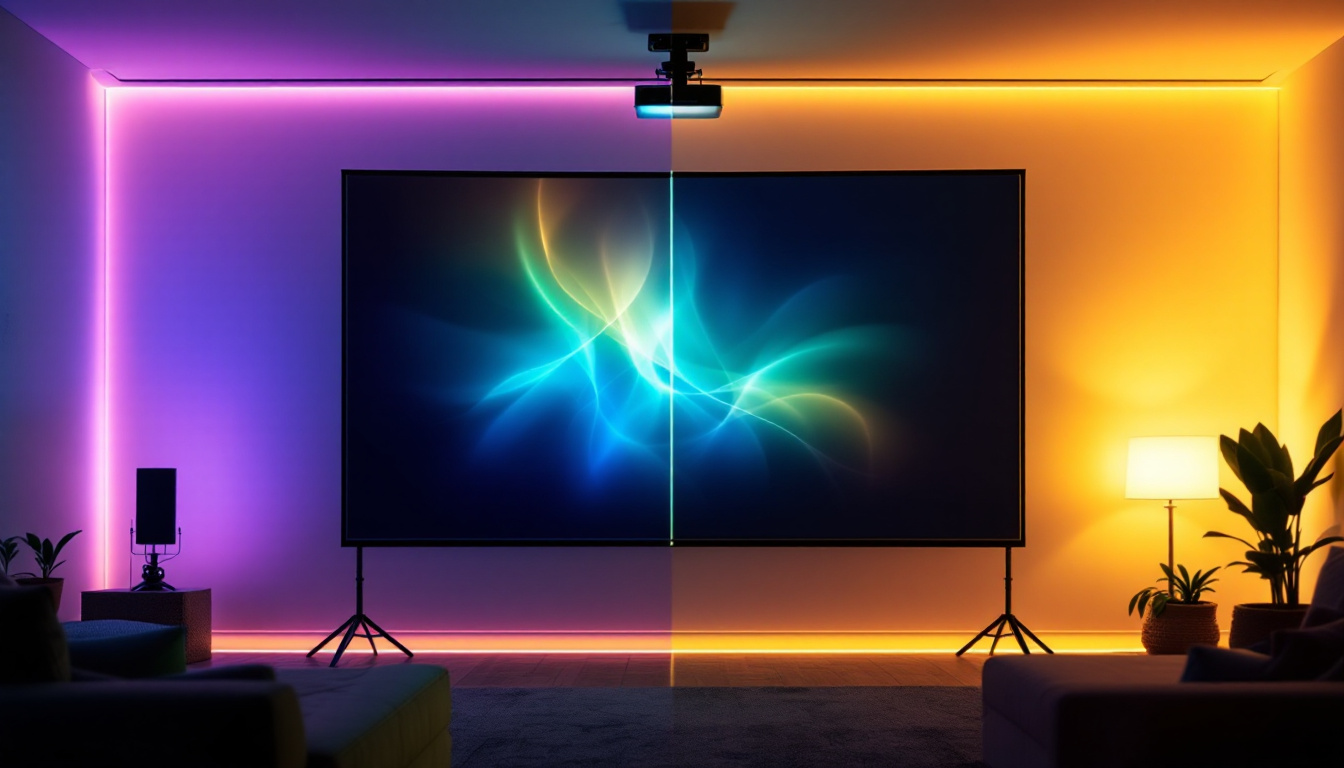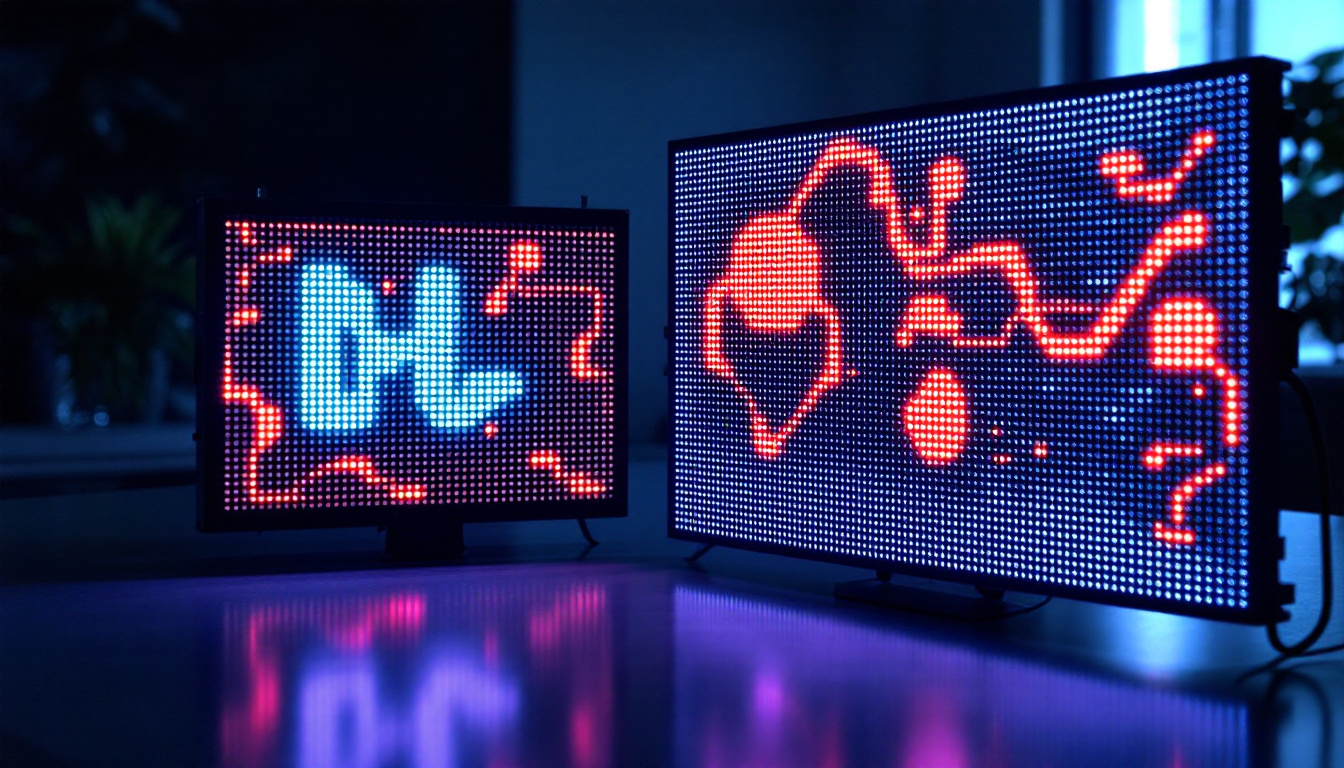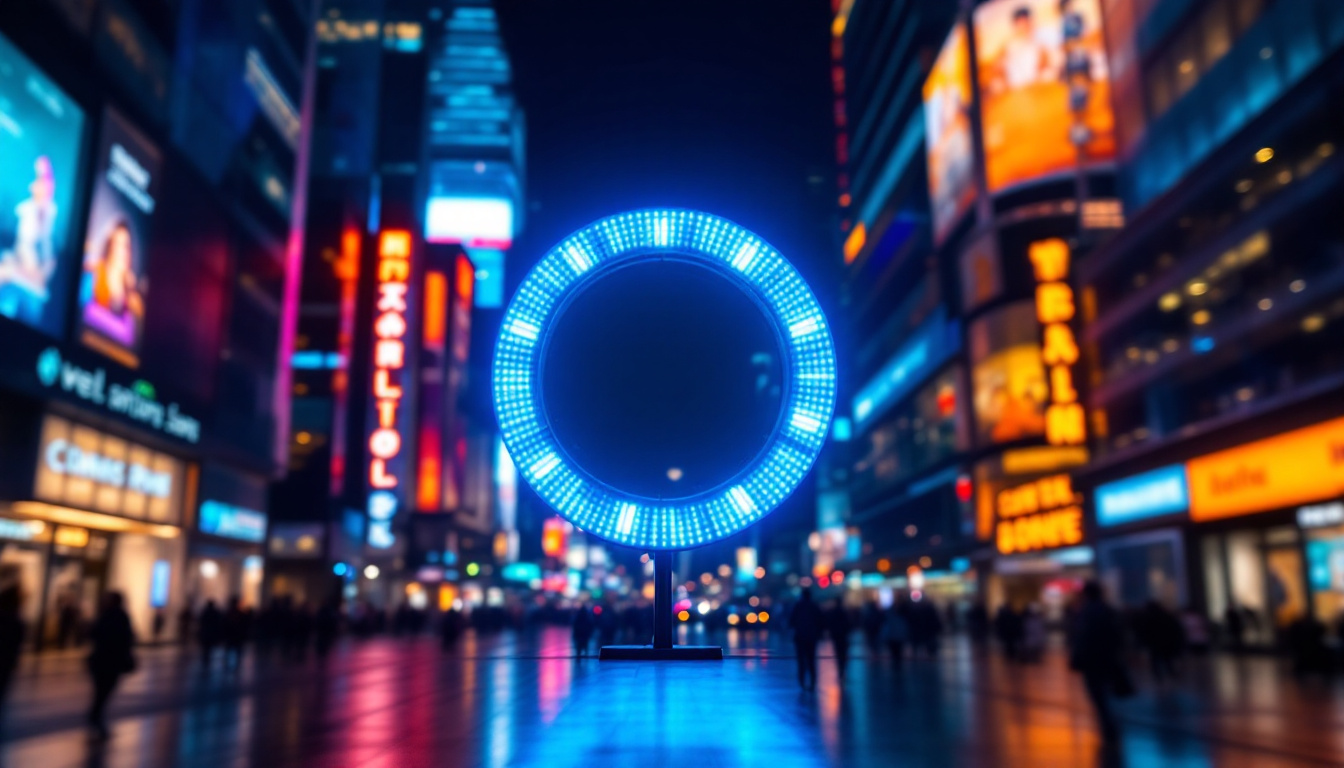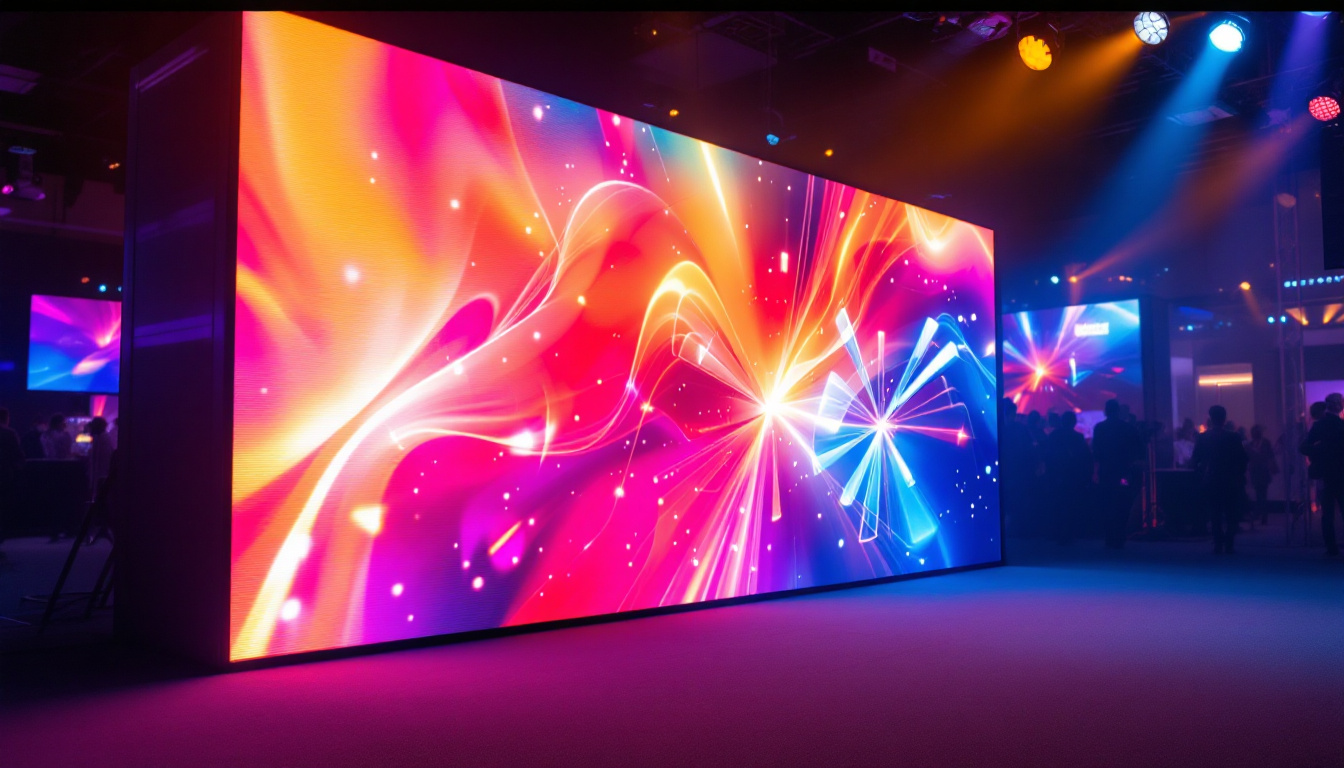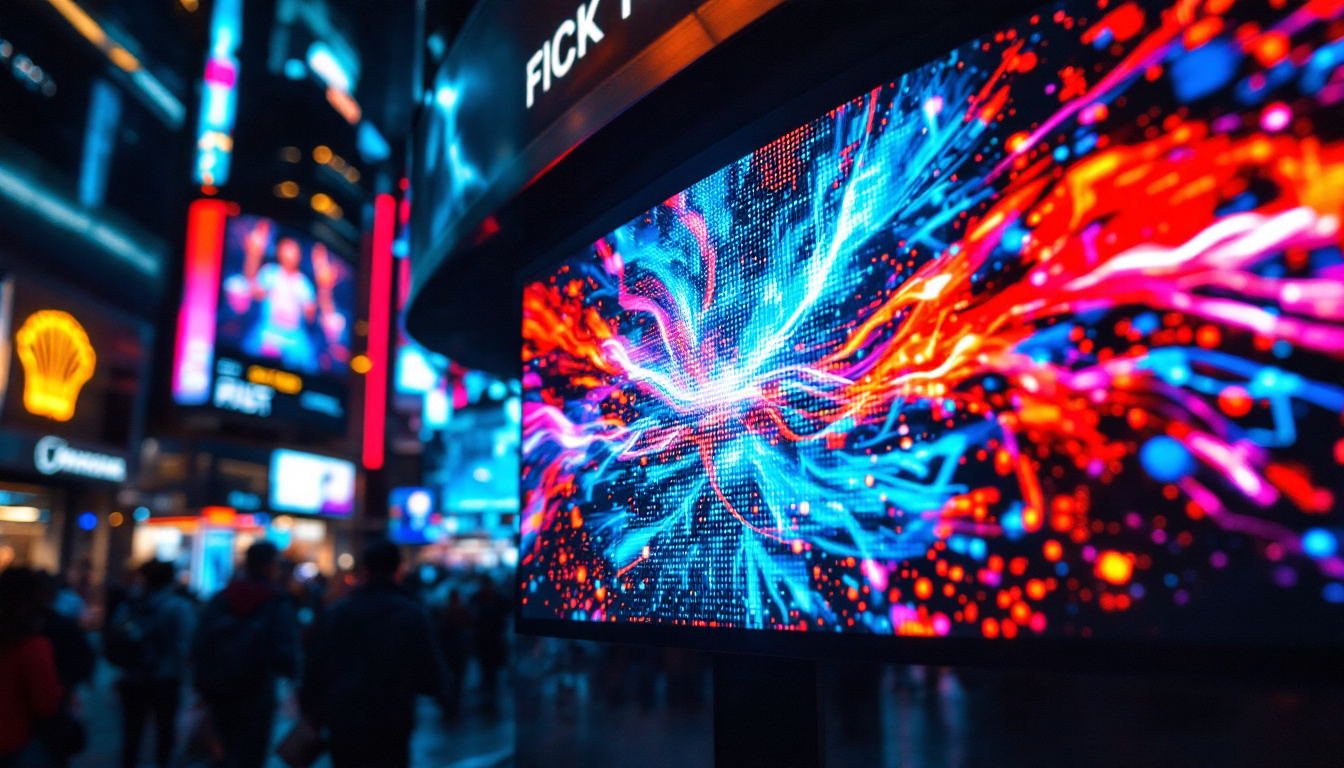How LCD Screens Work: LED Display Explained
In today’s digital age, LCD (Liquid Crystal Display) screens are ubiquitous, found in everything from smartphones to televisions. Understanding how these screens work, particularly the role of LED (Light Emitting Diode) technology, can enhance appreciation for the devices we use daily. This article delves into the intricacies of LCD screens and the LED technology that often powers them, providing insights into their functionality and advantages.
Understanding LCD Technology
LCD technology operates on the principle of manipulating light to create images. Unlike traditional cathode-ray tube (CRT) displays, which rely on electron beams and phosphors, LCDs use liquid crystals sandwiched between two layers of glass or plastic. These crystals can change their alignment when an electric current is applied, allowing them to control the passage of light.
The Basics of Liquid Crystals
Liquid crystals are unique substances that exhibit properties of both liquids and solids. In their natural state, these crystals are disordered, allowing light to pass through. However, when an electric current is applied, the crystals align in specific orientations, which can either block or allow light to pass through. This alignment creates the pixels that form the images on the screen.
Each pixel in an LCD is made up of sub-pixels, typically red, green, and blue. By varying the intensity of light passing through these sub-pixels, a wide range of colors can be produced. This color mixing is fundamental to how images are rendered on LCD screens. The precision of this color mixing is vital for applications ranging from high-definition television broadcasts to intricate graphic design work, where color accuracy can significantly impact the viewer’s experience.
Backlighting in LCD Screens
One of the essential components of an LCD screen is its backlighting system. Since liquid crystals do not emit light on their own, a light source is required to illuminate the display. Traditionally, cold cathode fluorescent lamps (CCFLs) were used for this purpose. However, the advent of LED technology has revolutionized backlighting in LCD screens.
LED backlighting offers several advantages over CCFLs, including improved energy efficiency, thinner designs, and better color accuracy. This shift has led to the creation of various types of LED-backlit LCDs, including edge-lit and full-array models, each with distinct characteristics and benefits. For instance, edge-lit displays utilize LEDs positioned along the edges of the screen, allowing for a slim profile, while full-array backlighting provides uniform brightness across the entire screen, enhancing picture quality, especially in dark scenes. Furthermore, advancements in local dimming technology allow certain areas of the screen to be dimmed or brightened independently, resulting in deeper blacks and more vibrant colors, which is particularly beneficial for viewing high-contrast content.
The Role of LED Technology
LEDs play a crucial role in modern LCD technology, serving as the primary light source that enhances brightness and color quality. Understanding how LEDs function and their integration into LCD screens provides insight into the evolution of display technology. The shift from traditional fluorescent backlighting to LED technology has revolutionized the way we experience visual media, offering sharper images and more vibrant colors.
How LEDs Work
Light Emitting Diodes (LEDs) are semiconductor devices that emit light when an electric current passes through them. The color of the light emitted depends on the materials used in the semiconductor. Commonly, blue, green, and red LEDs are combined to create white light, which can then be used to backlight an LCD screen. The process of creating white light from these colored LEDs involves complex engineering, where phosphor coatings may be applied to blue LEDs to achieve a broader spectrum of light, enhancing color accuracy and overall image quality.
LEDs are highly efficient compared to traditional light sources. They consume less power, generate less heat, and have a longer lifespan. This efficiency translates into energy savings for consumers and a reduced environmental impact, making LED technology a preferred choice for modern displays. Furthermore, the longevity of LEDs means that consumers can expect their devices to last longer without the need for frequent replacements, contributing to a more sustainable approach to electronics.
Types of LED Backlighting
There are primarily two types of LED backlighting used in LCD screens: edge-lit and full-array. Each type has its advantages and disadvantages, impacting the overall performance of the display. As technology continues to advance, manufacturers are constantly innovating to improve the performance of these backlighting methods, leading to enhanced viewing experiences.
Edge-lit LED displays have LEDs positioned along the edges of the screen. This design allows for thinner displays, making them ideal for sleek, modern aesthetics. However, edge-lit displays may suffer from uneven brightness and limited contrast ratios, especially in dark scenes. The placement of the LEDs can create challenges in achieving uniform light distribution, which can detract from the viewing experience in certain lighting conditions.
Full-array LED displays, on the other hand, have a grid of LEDs behind the entire screen. This configuration allows for more precise control over backlighting, resulting in better contrast and more uniform brightness across the display. Full-array technology often includes local dimming features, enhancing black levels and overall picture quality. This capability allows for a more dynamic range of colors and deeper blacks, making full-array displays particularly popular among film enthusiasts and gamers who demand high-quality visuals. The advancements in full-array technology, including mini-LED and micro-LED innovations, are paving the way for even more impressive display capabilities, pushing the boundaries of what we can expect from our screens.
Advantages of LCD with LED Technology
The combination of LCD technology with LED backlighting has led to numerous advantages that enhance the viewing experience. These benefits are significant factors in the widespread adoption of LCD screens in various applications.
Improved Energy Efficiency
One of the most notable advantages of LED-backlit LCDs is their energy efficiency. Compared to traditional CCFLs, LEDs consume significantly less power, which is particularly beneficial for portable devices like laptops and smartphones. This efficiency not only extends battery life but also reduces electricity costs for consumers.
Moreover, the lower heat output of LEDs contributes to a cooler operating temperature, reducing the need for extensive cooling systems in larger displays. This aspect is particularly advantageous for large-screen televisions and monitors.
Enhanced Color Accuracy and Brightness
LED technology has also improved color accuracy and brightness in LCD screens. With the ability to produce a broader color spectrum, LED-backlit displays can render more vibrant and lifelike images. This improvement is especially noticeable in high-definition content, where color fidelity is crucial for an immersive viewing experience.
Additionally, the brightness levels achievable with LED backlighting allow for better performance in various lighting conditions. Whether in a dimly lit room or under bright sunlight, LED displays can maintain clarity and visibility, enhancing usability across different environments.
Challenges and Limitations of LCD Screens
Despite the numerous advantages, LCD screens with LED technology are not without their challenges. Understanding these limitations is essential for consumers and manufacturers alike.
Viewing Angles
One of the primary drawbacks of LCD technology is its limited viewing angles. When viewed from an angle, colors and brightness can shift, leading to a less-than-optimal viewing experience. This issue is particularly pronounced in traditional LCD screens, although advancements in technology, such as IPS (In-Plane Switching) panels, have improved this aspect significantly.
IPS panels offer wider viewing angles and better color reproduction, making them suitable for applications where multiple viewers may be watching from different positions. However, these panels can be more expensive to produce, which may limit their availability in budget-friendly options.
Response Times and Motion Blur
Another challenge faced by LCD screens is response time, which refers to how quickly a pixel can change from one color to another. Slower response times can lead to motion blur, particularly in fast-moving scenes, such as action movies or video games. While many modern LCDs have improved response times, some still struggle to keep up with high-speed content.
To combat this issue, manufacturers have developed various technologies, such as motion smoothing and frame interpolation, to enhance the viewing experience. However, these solutions can sometimes introduce artifacts or reduce the natural motion of the content.
Future of LCD and LED Technology
The future of LCD and LED technology is promising, with ongoing advancements aimed at overcoming current limitations and enhancing performance. As consumer demands for better displays continue to grow, manufacturers are investing in research and development to push the boundaries of what is possible.
Quantum Dot Technology
One of the most exciting developments in display technology is the integration of quantum dot technology with LCD screens. Quantum dots are tiny semiconductor particles that emit specific colors when exposed to light. By incorporating quantum dots into the LCD backlighting system, manufacturers can achieve even greater color accuracy and brightness levels.
This technology has the potential to revolutionize the display industry, offering richer colors and improved energy efficiency. As quantum dot technology becomes more mainstream, it may redefine the standards for color performance in LCD screens.
OLED and Beyond
While LCD with LED backlighting remains a dominant technology, the rise of OLED (Organic Light Emitting Diode) displays presents both competition and inspiration for LCD advancements. OLED technology offers superior contrast ratios and viewing angles, as each pixel emits its own light, eliminating the need for backlighting.
As OLED becomes more prevalent, LCD manufacturers are likely to continue innovating, seeking ways to enhance their products’ performance and maintain market relevance. This ongoing competition will ultimately benefit consumers, leading to better displays across the board.
Conclusion
LCD screens with LED backlighting have transformed the way we interact with technology, providing vibrant images and energy-efficient performance. Understanding the mechanics behind these displays reveals the complexity and innovation that drive modern technology.
While challenges remain, advancements in LCD and LED technology continue to evolve, promising a future filled with even more impressive displays. As consumers, staying informed about these developments can enhance the appreciation for the devices that have become integral to everyday life.
Discover Cutting-Edge LED Displays with LumenMatrix
As you’ve seen, LED technology is integral to the advancements in LCD screens, offering improved energy efficiency, color accuracy, and overall visual performance. If you’re inspired by the innovation behind these displays and want to experience the pinnacle of LED technology, look no further than LumenMatrix. Specializing in a wide array of LED display solutions, from Indoor and Outdoor LED Wall Displays to Custom and All-in-One LED Displays, LumenMatrix is at the forefront of creating immersive visual experiences. Whether for advertising, entertainment, or information sharing, their LED displays are designed to captivate and engage. Check out LumenMatrix LED Display Solutions today and see how they can transform your visual communication.





